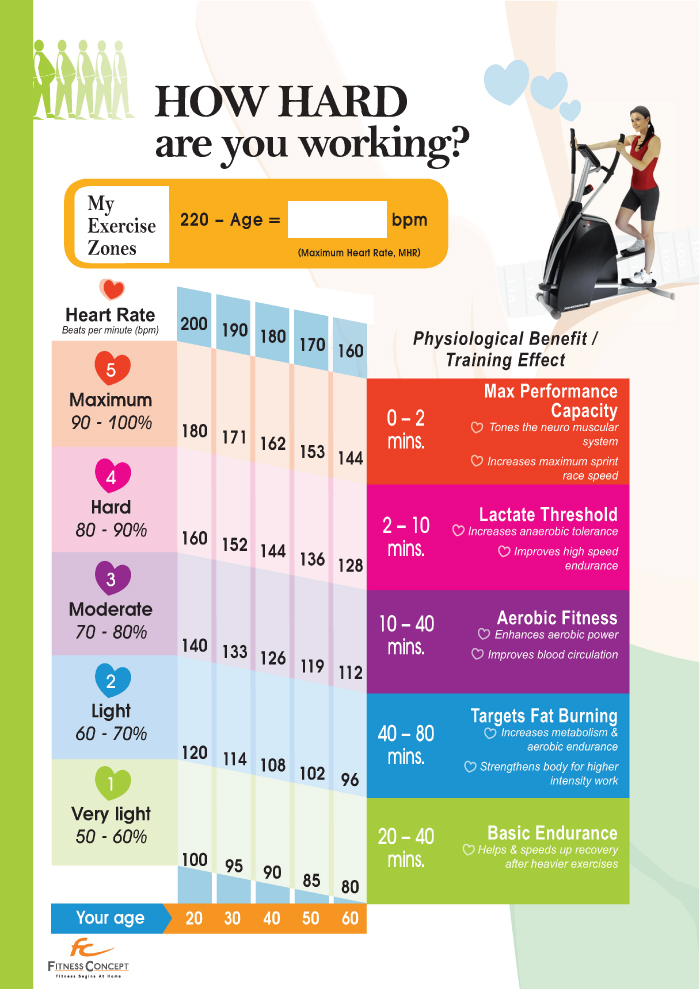Why monitor your heart rate?
You're huffing and puffing through another aerobic workout, wondering if you're really doing yourself any good. Are you working too hard or not hard enough?
You look around. The person next to you has barely broken a sweat while the one in front is drenched from head to toe. Well, sweat may not be the best indicator of exercise intensity. For that, we need to look to our hearts.
Heart rates, to be exact. When you exercise, your heart beats faster to meet the demand for more blood and oxygen by the muscles of the body. The more intense the activity, the faster your heart will beat. Therefore, monitoring your heart rate during exercise can be an excellent way to monitor exercise intensity.
For the majority of aerobic enthusiasts, there is a range of exercise intensities that is described as safe and effective for promoting cardiovascular benefits. To determine what range is best for you, you'll need to be familiar with a few terms.
1. Maximal heart rate:
This number is related to your age. As we grow older, our hearts start to beat a little more slowly. To estimate your maximal heart rate, simply subtract your age from the number 220.
2. Target heart-rate zone:
This is the number of beats per minute (bpm) at which your heart should be beating during aerobic exercise. For most healthy individuals, this range is 50 to 80 percent of your maximal heart rate. So, if your maximal heart rate is 180 bpm, the low end of the range (50 percent) would be 90 bpm, and the high end of the range (80 percent) would be 144 bpm.
What does this recommended heart-rate range mean?
Now that you've determined your target heart-rate zone, you need to know how to put that information to good use. These numbers serve as a guideline - an indicator of how hard you should be exercising.
Those just beginning an aerobic program should probably aim for the low end of the zone and pick up the intensity as they become more comfortable with their workouts. Those who are more fit, or are training for competitive events, may want to aim for the higher end of the zone.

Keep in mind that the target heart-rate zone is recommended for individuals without any health problems. Additionally, individuals taking mediction that alter the heart rate should consult their physician for recommended exercise intensity.
Where to monitor?
There are a number of ''sites'' used to monitor the pulse rate. Two convenient sites to use are the radial pulse at the base of the thumb of either hand, or the carotid pulse at the side of the neck.
Accurate pulse-count assessment is crucial when monitoring exercise intensity. By using the first two fingers of one hand and locating the artery, a pulse rate can be easily determined.
Immediately after exercise, isolate your pulse and count the number of beats in a 10-second period. To determine the heart rate in beats per minute, multiply the number of beats per 10 seconds by six. For instance, if a 10-second pulse count were 20, then the heart rate would be 120 bpm.
A final word about heart-rate monitoring
Remember, your estimated target heart-rate zone is just that - an estimate. If you feel like you are exercising too hard, you probably are. The best advice is to reduce your intensity and find a heart-rate range that works for you.





















Please complete your information below to login.